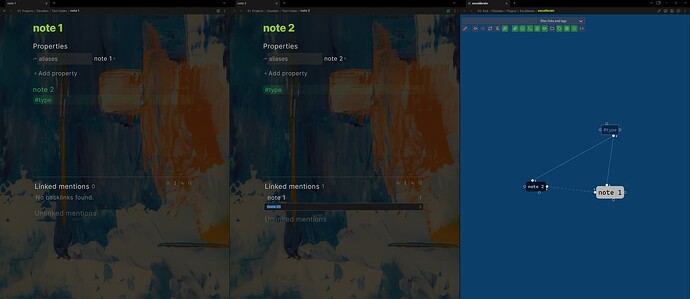To turn a Obsidian to a Third generation tool we just need to make Links first class citizens and give posibility to create a metadata for links .
This is possible with some plugins. Typed links are a feature of the Jugl Plugin. However, for my purposes, I found that Excalibrain is sufficient and more accessible. You can acheive the effect of typed links by using tags.
